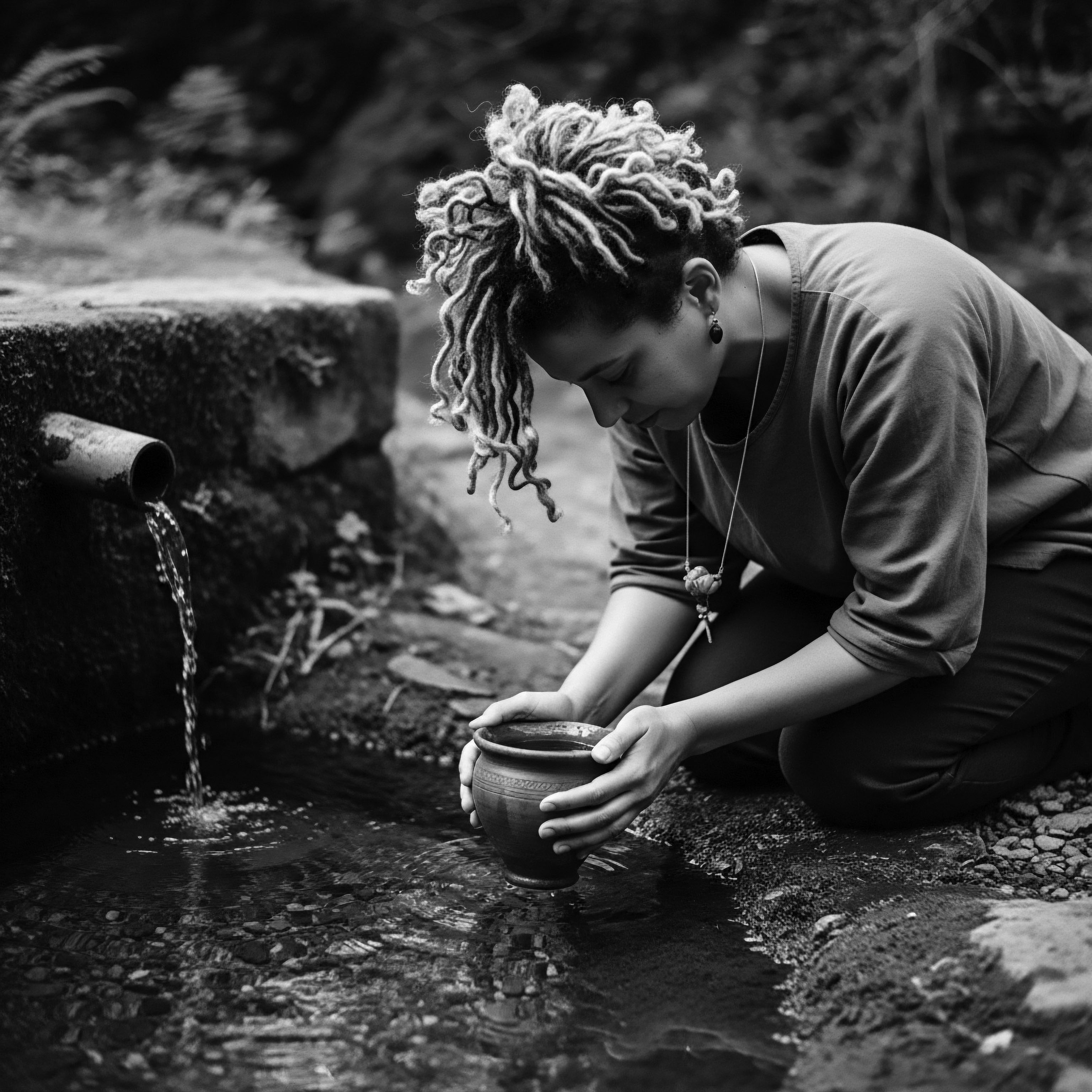
Fundamentals
The concept of Mineral Buildup, when applied to the realm of textured hair, describes the gradual accumulation of dissolved solids from water sources onto the hair strands and scalp. These elemental traces, primarily calcium and magnesium, are common constituents of what is known as ‘hard water.’ As water interacts with geological formations, it gathers these minerals, which then deposit onto surfaces, including our hair, during washing rituals. The presence of these mineral deposits on hair can alter its inherent characteristics, influencing its appearance, feel, and responsiveness to care. This phenomenon is not merely a modern concern; its echoes resonate through generations of hair care practices, particularly within communities whose ancestral traditions often involved diverse water sources and natural cleansing agents.
Understanding Mineral Buildup begins with recognizing the elemental interplay. Hair, especially textured hair with its unique cuticle structure and varied curl patterns, possesses a surface that readily attracts and binds these positively charged mineral ions. This adherence can create a subtle, yet persistent, coating.
Over time, this coating can diminish the hair’s natural luster, leaving it feeling rough or stiff. The capacity for these minerals to bind to hair is often amplified in strands with higher porosity or those that have experienced previous damage, creating more sites for attachment.
Mineral Buildup on textured hair represents the gradual adherence of water-borne minerals, particularly calcium and magnesium, impacting the hair’s inherent qualities and responsiveness to care.
The meaning of this accumulation extends beyond a simple cosmetic inconvenience. It speaks to a deeper connection between environmental elements and our hair’s vitality. Imagine ancient communities drawing water from diverse springs or rivers, each with its distinct mineral profile. Their intuitive knowledge of how certain waters affected their hair, and the traditional remedies they developed, represent early responses to this very phenomenon.
These ancestral insights, passed down through oral traditions and communal practices, form a foundational layer for our contemporary comprehension of Mineral Buildup. The elucidation of this process allows us to appreciate the ingenuity of past generations who, without scientific laboratories, devised methods to counteract the effects of their local water sources.
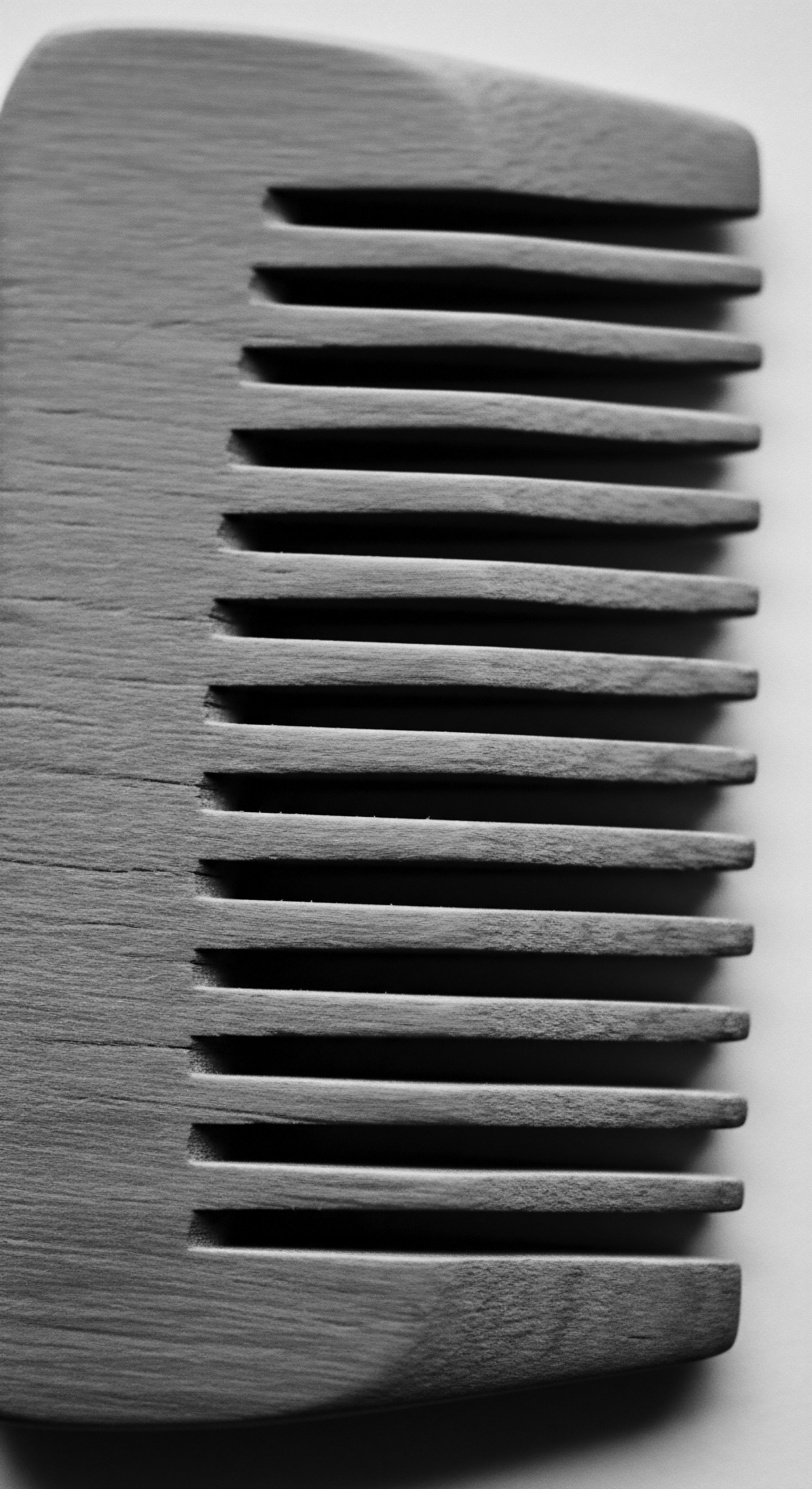
The Elemental Veil ❉ How Minerals Adhere
Water, a fundamental element in all cleansing rituals, carries within it a hidden cargo ❉ dissolved minerals. When water is described as ‘hard,’ it contains a greater concentration of these minerals, chiefly Calcium and Magnesium. These ions possess a positive charge, making them eager to bond with the negatively charged sites present on the hair’s cuticle. The outermost layer of the hair, the cuticle, resembles overlapping scales.
When these scales are lifted or damaged, they offer more exposed areas for minerals to cling to. This binding process forms a microscopic veil, a thin, often imperceptible film that envelops the hair strand.
The composition of textured hair, with its varying degrees of curl, coil, and wave, means that the cuticle often experiences more natural lifting and exposure compared to straight hair. This structural reality makes textured strands particularly susceptible to mineral adhesion. The unique contours of curls and coils also create more surface area for these deposits to settle, potentially leading to a denser accumulation over time.
- Calcium Carbonate ❉ A primary mineral often found in hard water, it contributes significantly to the feeling of stiffness and can leave a dull film.
- Magnesium Salts ❉ These minerals, alongside calcium, contribute to the overall ‘hardness’ of water and can also bind to hair, diminishing its softness.
- Iron Deposits ❉ Less common but more visually impactful, iron can cause discoloration, especially in lighter hair tones, resulting in brassy or reddish hues.

Initial Manifestations ❉ Recognizing the Signs
Recognizing the presence of Mineral Buildup on hair often begins with subtle shifts in how hair looks and feels. A common indication is a lack of expected lather from shampoos, as minerals interfere with the cleansing agents, making them less effective. Hair may also feel persistently unclean, even immediately following a wash. This sensation arises because the mineral film acts as a barrier, preventing thorough cleansing and the penetration of moisturizing products.
Another telltale sign involves changes in the hair’s texture and pliability. Hair might become stiff, rough, or unmanageable, losing its natural bounce and elasticity. This diminished flexibility can lead to increased tangling and a greater propensity for breakage, particularly in fragile textured strands. Over time, hair can appear dull, lacking its inherent shine and vibrancy, as the mineral coating obscures its natural light reflection.
For those with color-treated hair, mineral deposits can accelerate fading or cause unwanted color shifts, such as brassiness. The scalp may also experience dryness, irritation, or flakiness, as mineral residue can clog follicles and hinder the scalp’s natural oil production, creating an unhealthy environment for hair growth.
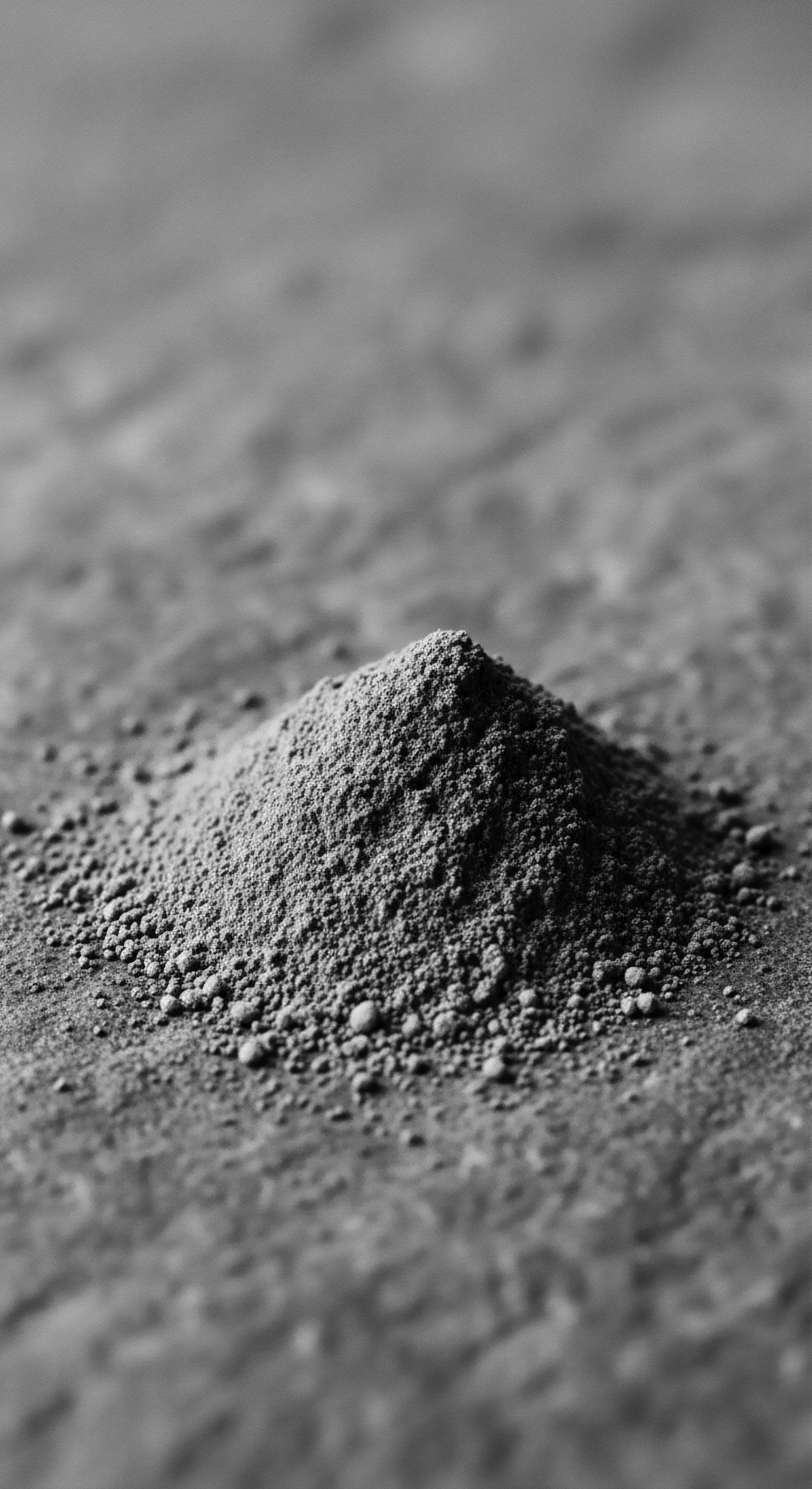
Intermediate
Moving beyond the foundational understanding, the intermediate perspective on Mineral Buildup acknowledges its pervasive influence on hair’s fundamental chemistry and physical properties, particularly within the context of textured hair. This deeper interpretation reveals how mineral deposits, far from being inert particles, actively interfere with the hair’s ability to absorb and retain moisture, a critical aspect for the health and appearance of curls and coils. The meaning of Mineral Buildup at this level encompasses its role as a silent antagonist to hair’s natural hydration mechanisms, often exacerbating existing challenges faced by textured hair.
The explanation for this lies in the interaction between the positively charged mineral ions and the negatively charged sites on the hair shaft. These ions effectively occupy spaces that water molecules or conditioning agents might otherwise fill, creating a barrier. This barrier impedes the proper absorption of moisture, leaving hair perpetually thirsty, despite consistent application of hydrating products.
The hair’s surface becomes less receptive, and its natural elasticity, a hallmark of healthy textured hair, can diminish. This often leads to increased brittleness and a heightened susceptibility to breakage, a concern that has historically impacted Black and mixed-race hair experiences, often misattributed solely to styling practices rather than environmental factors.

The Water’s Hand ❉ Regional Variations and Ancestral Adaptations
The composition of water varies significantly across geographical regions, a fact that has shaped hair care traditions for millennia. Communities in areas with naturally hard water, rich in calcium and magnesium, developed ingenious methods to mitigate its effects long before modern chemistry provided explanations. This historical understanding forms a vital part of textured hair heritage. The traditional practices were not simply about cleanliness; they were about preserving the hair’s integrity against the very elements.
Mineral Buildup subtly undermines the hair’s natural hydration, transforming it into a persistent barrier against moisture and elasticity.
Consider the use of acidic rinses in various ancestral hair care rituals. For instance, ancient Egyptians and Romans employed Citrus Juice and Vinegar Rinses for hair cleansing, which, unbeknownst to them in scientific terms, served to counteract the alkalinity and mineral deposits from hard water. Similarly, the use of fermented rice water in some Asian traditions, or certain plant-based cleansers with a naturally lower pH, would have offered similar benefits. These practices, born of necessity and observation, represent a profound, inherited knowledge of how to maintain hair health in diverse water environments.
| Historical/Ancestral Practice Acidic Rinses (e.g. citrus, vinegar) |
| Underlying Principle (Heritage Link) Restoring balance to hair affected by mineral-rich water; an intuitive understanding of pH. |
| Modern Counterpart/Explanation Chelating shampoos or acidic rinses (e.g. apple cider vinegar) which dissolve mineral bonds. |
| Historical/Ancestral Practice Clay Washes (e.g. Rhassoul clay) |
| Underlying Principle (Heritage Link) Drawing impurities and absorbing excess oils; a deep cleanse from earth's bounty. |
| Modern Counterpart/Explanation Detoxifying masks and clarifying treatments, often with natural clays or activated charcoal. |
| Historical/Ancestral Practice Herbal Infusions (e.g. soapberry, hibiscus) |
| Underlying Principle (Heritage Link) Gentle cleansing and conditioning properties derived from saponins and plant compounds. |
| Modern Counterpart/Explanation Sulfate-free shampoos and botanical conditioners that cleanse without stripping natural oils. |
| Historical/Ancestral Practice Oiling Rituals (e.g. shea butter, coconut oil) |
| Underlying Principle (Heritage Link) Protecting hair strands from environmental stressors and retaining moisture; creating a barrier. |
| Modern Counterpart/Explanation Pre-shampoo treatments or leave-in oils that coat the hair, reducing mineral adhesion. |
| Historical/Ancestral Practice These parallel practices demonstrate a continuous human endeavor to maintain hair vitality, bridging ancestral wisdom with contemporary scientific insights. |

The Compromised Strand ❉ Structural Implications
The accumulation of minerals on the hair shaft has direct structural implications. The hair’s cuticle, which should lie flat and smooth to reflect light and retain moisture, becomes roughened and lifted by the mineral deposits. This creates a coarse, uneven surface.
The hair then feels rough to the touch, loses its characteristic softness, and becomes more prone to tangling and knotting. For individuals with textured hair, this translates to curls that lack definition, appear limp, and lose their inherent springiness.
The diminished elasticity is a significant concern. Healthy hair possesses a degree of stretch and rebound; Mineral Buildup reduces this capacity, making strands more rigid. This rigidity contributes to increased friction between individual hair strands, which in turn can lead to mechanical damage and breakage.
Such breakage can cause hair to appear thinner over time, even though mineral buildup itself does not cause hair loss. This nuanced understanding allows us to appreciate the subtle yet profound ways environmental factors can impact hair health, particularly for hair types that are already predisposed to dryness and fragility.
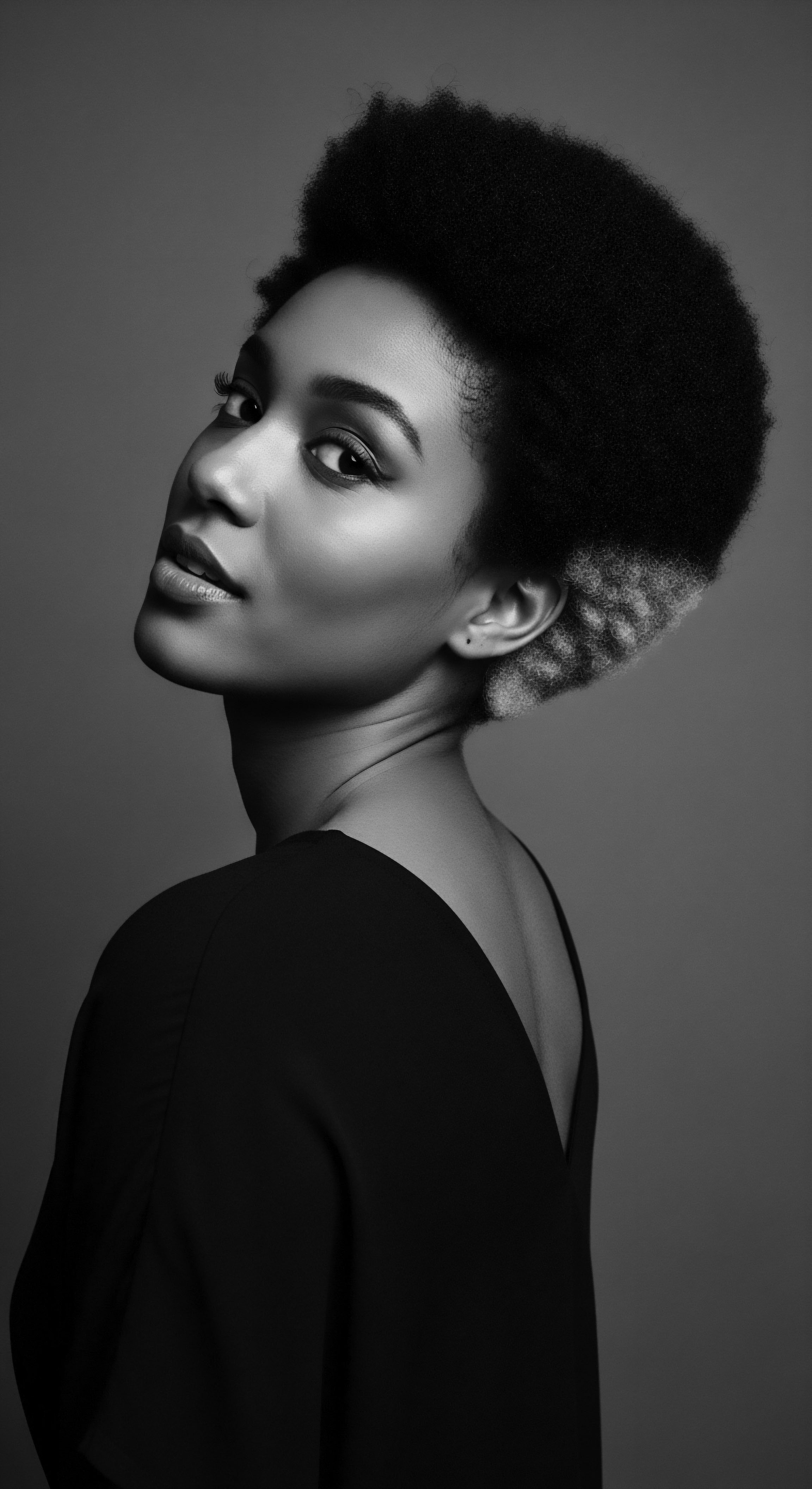
Academic
The academic elucidation of Mineral Buildup on textured hair delves into the precise biophysical and chemical interactions that govern its formation and impact. This detailed explanation posits Mineral Buildup not merely as a surface phenomenon, but as a complex interplay of water chemistry, hair morphology, and product science, all viewed through the lens of ancestral hair practices and the enduring legacy of Black and mixed-race hair experiences. The meaning of Mineral Buildup, from this scholarly perspective, extends to its systemic implications for hair integrity, scalp health, and the efficacy of traditional and contemporary care regimens. It signifies a continuous challenge, met with centuries of adaptive wisdom.
At its core, Mineral Buildup represents the precipitation and adsorption of divalent cations, predominantly Ca2+ (calcium) and Mg2+ (magnesium), onto the negatively charged keratinous surface of the hair fiber. This electrostatic attraction is amplified by the inherent negative charge of hair, particularly at the cuticle edges and in areas of structural damage. The cuticle, composed of overlapping scales, offers numerous anionic sites where these mineral ions can bind, forming insoluble complexes.
This binding process is further complicated by the presence of surfactants in cleansing products, which can react with these minerals to form ‘soap scum,’ an additional layer of insoluble residue that adheres to the hair and scalp. This chemical reaction reduces the effectiveness of cleansers, leaving hair feeling unwashed and coated.
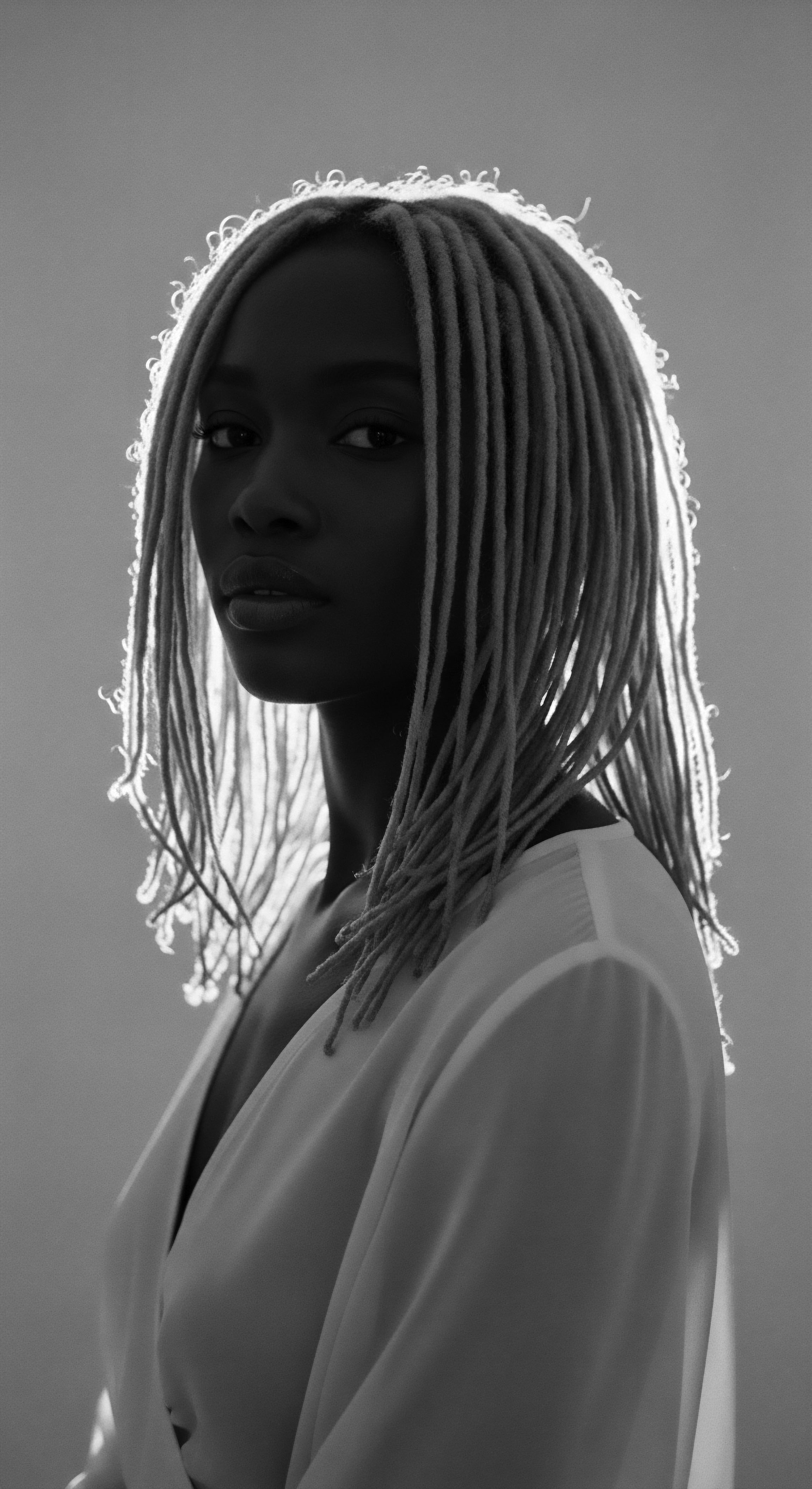
Hydro-Geological Legacies ❉ Water Hardness and Hair Resilience
The geological landscape of a region directly dictates the mineral content of its water sources, thereby influencing hair care practices across generations. In many parts of the world, including significant portions of the African continent and its diaspora, communities have historically relied on groundwater, which is often rich in dissolved minerals. This environmental reality meant that ancestral hair care systems were, by necessity, sophisticated responses to water hardness. The significance of these hydro-geological legacies cannot be overstated; they represent a deep, embodied knowledge of the interaction between natural elements and hair.
A notable example of this adaptive wisdom can be found in the traditional hair care practices of certain communities in Northern Africa, where Rhassoul Clay (also known as Ghassoul clay) has been used for centuries as a cleansing agent. This clay, sourced from deposits in Morocco, is renowned for its ability to draw out impurities and absorb excess oils. Its inherent properties, including a high mineral content that, paradoxically, helps to chelate other minerals when mixed with water, allowed it to serve as an effective cleanser that also mitigated the effects of hard water.
This practice, documented in ethnobotanical surveys, illustrates a sophisticated, pre-scientific understanding of mineral management on hair. The ancestral communities observed the clarifying and softening effects of this earth-derived substance, passing down its usage through generations, thereby preserving a vital piece of hair care heritage.
The academic lens reveals Mineral Buildup as a complex biophysical challenge, historically met by ancestral ingenuity and culturally attuned care systems.
The implications of prolonged exposure to hard water extend to the very architecture of the hair strand. The mineral coating can disrupt the hair’s natural pH balance, which ideally sits in a slightly acidic range (pH 4.5-5.5). An elevated pH, often induced by hard water, causes the cuticle scales to lift, rendering the hair more porous and susceptible to further damage and moisture loss. This increased porosity allows more mineral ions to penetrate the inner cortex, potentially interfering with internal protein structures and diminishing the hair’s tensile strength and elasticity over time.
While some studies suggest no statistical difference in tensile strength or elasticity between hair treated with hard versus distilled water under typical conditions, they also acknowledge that higher salt content or prolonged exposure could alter these findings. This nuanced understanding underscores the long-term, cumulative impact of environmental factors on hair health, particularly for textured hair types that already possess unique structural characteristics.

The Efficacy of Traditional Chelators ❉ A Scientific Reappraisal
The efficacy of traditional cleansing agents, often dismissed as rudimentary, gains profound scientific validation when viewed through the lens of chelating chemistry. Chelating agents are compounds that bind to metal ions, forming stable, water-soluble complexes that can then be rinsed away. Many ancestral ingredients used for hair cleansing exhibit these very properties, serving as natural chelators.
Consider the widespread historical use of Apple Cider Vinegar (ACV) or Lemon Juice rinses across various cultures, including those within the African diaspora. These acidic solutions, with their low pH, function by protonating the anionic sites on the hair, displacing the bound mineral cations. The organic acids (acetic acid in ACV, citric acid in lemon juice) also possess mild chelating capabilities, aiding in the removal of mineral deposits and soap scum. This practice not only cleansed the hair but also helped to restore the cuticle to its flattened, light-reflecting state, thereby enhancing shine and reducing frizz.
The anthropological perspective reveals that these practices were not random acts but rather carefully observed and transmitted rituals, deeply embedded in cultural narratives of beauty and well-being. The knowledge of which plants or substances to use, and in what manner, was often tied to local ecology and passed down through oral traditions, reflecting a profound, empirical understanding of material science. This rich heritage offers a powerful counter-narrative to the often Eurocentric historical accounts of hair care, emphasizing the sophisticated adaptive strategies developed within Black and mixed-race communities.
- Citrus Juices ❉ Lemon and lime, rich in citric acid, were historically applied to hair to brighten and cleanse, effectively chelating some minerals.
- Vinegar Solutions ❉ Often diluted, vinegar rinses (such as those made from apple cider) were used to restore shine and softness, neutralizing alkaline deposits.
- Certain Clays ❉ Beyond cleansing, specific clays like Rhassoul clay, with their unique mineral compositions, exhibit ion-exchange properties that can aid in mineral removal.
- Fermented Waters ❉ The use of fermented rice water, while primarily for conditioning, also introduces mild acids and enzymes that could contribute to a cleaner scalp environment.
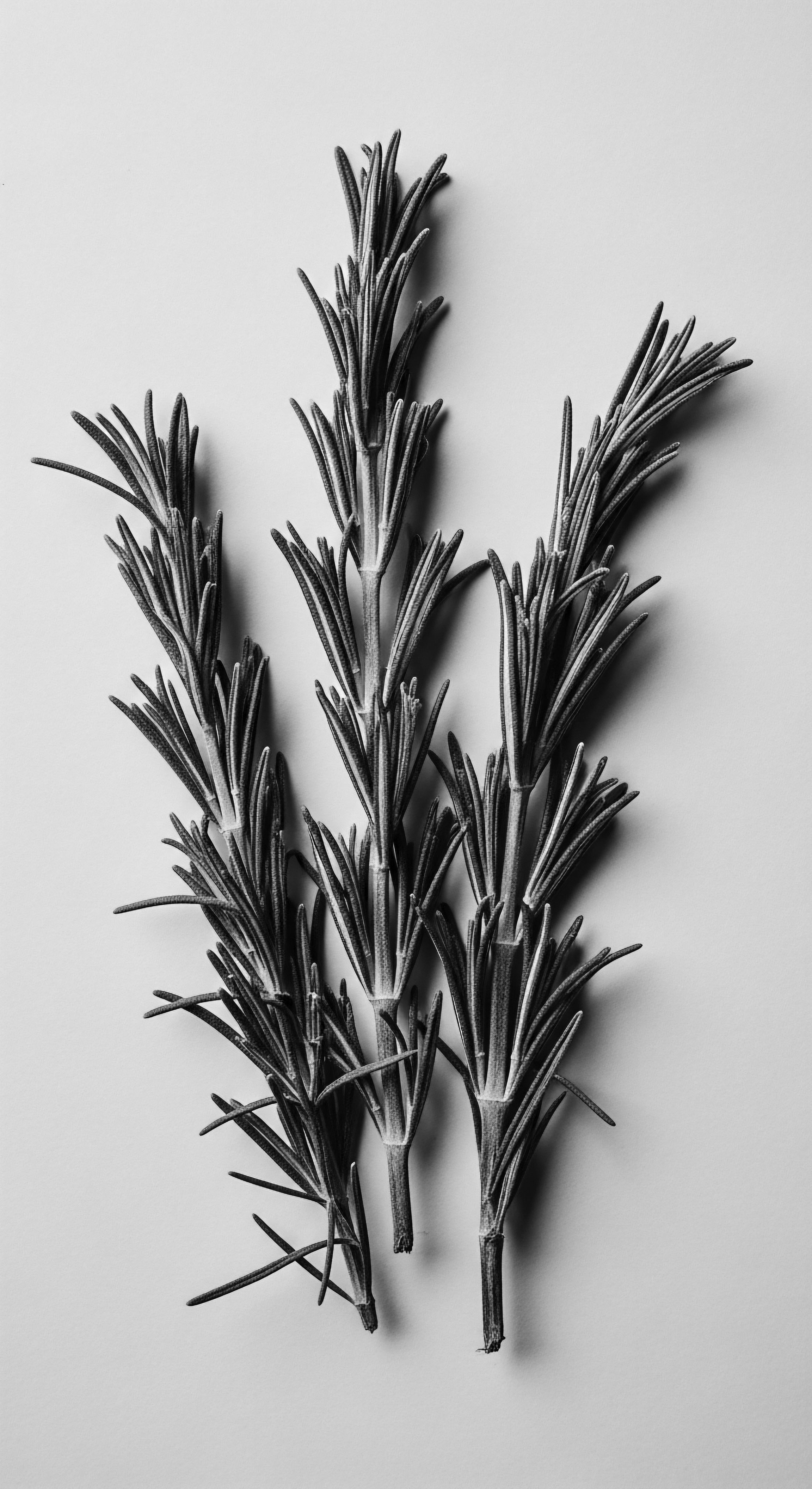
The Unseen Barrier ❉ Impact on Product Efficacy and Scalp Health
From an academic standpoint, Mineral Buildup forms an unseen barrier that significantly compromises the efficacy of modern hair care products, a challenge acutely felt by individuals with textured hair who often rely on a greater array of products for moisture and styling. The mineral film acts as a physical impediment, preventing conditioners, deep treatments, and styling creams from fully penetrating the hair shaft. This results in products performing below their intended capacity, leading to a cycle of increased product usage in an attempt to achieve desired results, paradoxically contributing to further surface accumulation.
The impact on scalp health is equally significant. Mineral deposits can accumulate around hair follicles, creating a film that clogs these vital openings. This blockage can disrupt the scalp’s natural sebum production, leading to dryness, itchiness, and flakiness. For individuals with pre-existing scalp conditions such as eczema or psoriasis, hard water exposure can exacerbate symptoms, causing heightened irritation and inflammation.
This highlights a critical, often overlooked, environmental factor in scalp dermatoses within communities that may be disproportionately affected by water quality issues due to historical and systemic factors. The intricate relationship between environmental water quality, mineral accumulation, and the health of the hair and scalp underscores the need for a holistic approach to textured hair care, one that honors both scientific understanding and ancestral wisdom in addressing these pervasive challenges.

Reflection on the Heritage of Mineral Buildup
The journey through the intricate layers of Mineral Buildup, from its elemental origins to its scientific nuances, consistently returns to the profound wellspring of textured hair heritage. This exploration is not merely an academic exercise; it represents a deep meditation on the resilience, ingenuity, and enduring spirit embedded within Black and mixed-race hair traditions. The ‘Soul of a Strand’ ethos finds its clearest voice here, as we acknowledge that every coil, every curl, carries the echoes of ancestral wisdom, adapting and thriving amidst environmental realities.
Across generations, communities intuitively understood the whisper of the water and the earth. They learned to discern the subtle shifts in their hair’s texture and behavior, linking these observations to the very sources from which they drew their cleansing waters. This embodied knowledge, passed down through the tender thread of familial ritual and communal care, forged a legacy of practices that, in retrospect, were often sophisticated responses to the challenge of mineral accumulation. Whether through the application of specific clays, the use of acidic plant rinses, or the strategic anointing with protective oils, these methods were not random acts but carefully curated solutions, born of intimate connection to the land and its offerings.
The contemporary understanding of Mineral Buildup, validated by modern scientific inquiry, does not diminish the brilliance of these ancestral approaches. Instead, it illuminates their prescience, allowing us to appreciate the unbroken lineage of care. Our present-day clarifying shampoos and chelating treatments stand as direct descendants of those ancient remedies, reminding us that the pursuit of healthy, vibrant hair is a continuous human endeavor, deeply rooted in a shared past. The challenge of mineral deposits, therefore, becomes another testament to the adaptive genius inherent in textured hair heritage, shaping its history and inspiring its future.

References
- Byrd, A. & Tharps, L. (2001). Hair Story ❉ Untangling the Roots of Black Hair in America. St. Martin’s Press.
- Douglas, A. Onalaja, A. A. & Taylor, S. C. (2020). Hair care products used by women of African descent ❉ review of ingredients. Cutis, 105(4), 183-188.
- Dabiri, E. (2019). Twisted ❉ The Tangled History of Black Hair Culture. HarperCollins.
- Mouchane, M. Taybi, H. Gouitaa, N. & Assem, N. (2023). Ethnobotanical Survey of Medicinal Plants used in the Treatment and Care of Hair in Karia ba Mohamed (Northern Morocco). Journal of Medicinal Plants and By-products, 13(1), 201-208.
- Sake Dean Mahomed. (1822). Shampooing; or Benefits resulting from the use of the Indian medicated vapour bath. J. D. Mahomed.
- Shaheen, H. Nazir, J. Firdous, S. & Khalid, A. (2014). Cosmetic ethnobotany practiced by tribal women of Kashmir Himalayas. Avicenna Journal of Phytomedicine, 4(4), 239-250.
- Walker, M. C. J. (1918). Text Book of the Madam C.J. Walker Schools of Beauty Culture. The Madam C.J. Walker Manufacturing Company.
- Yadav, A. & Baquer, N. Z. (2014). Ethnobotanical and Pharmacological Importance of the Herbal Plants With Anti-Hair Fall and Hair Growth Activities. ResearchGate .
